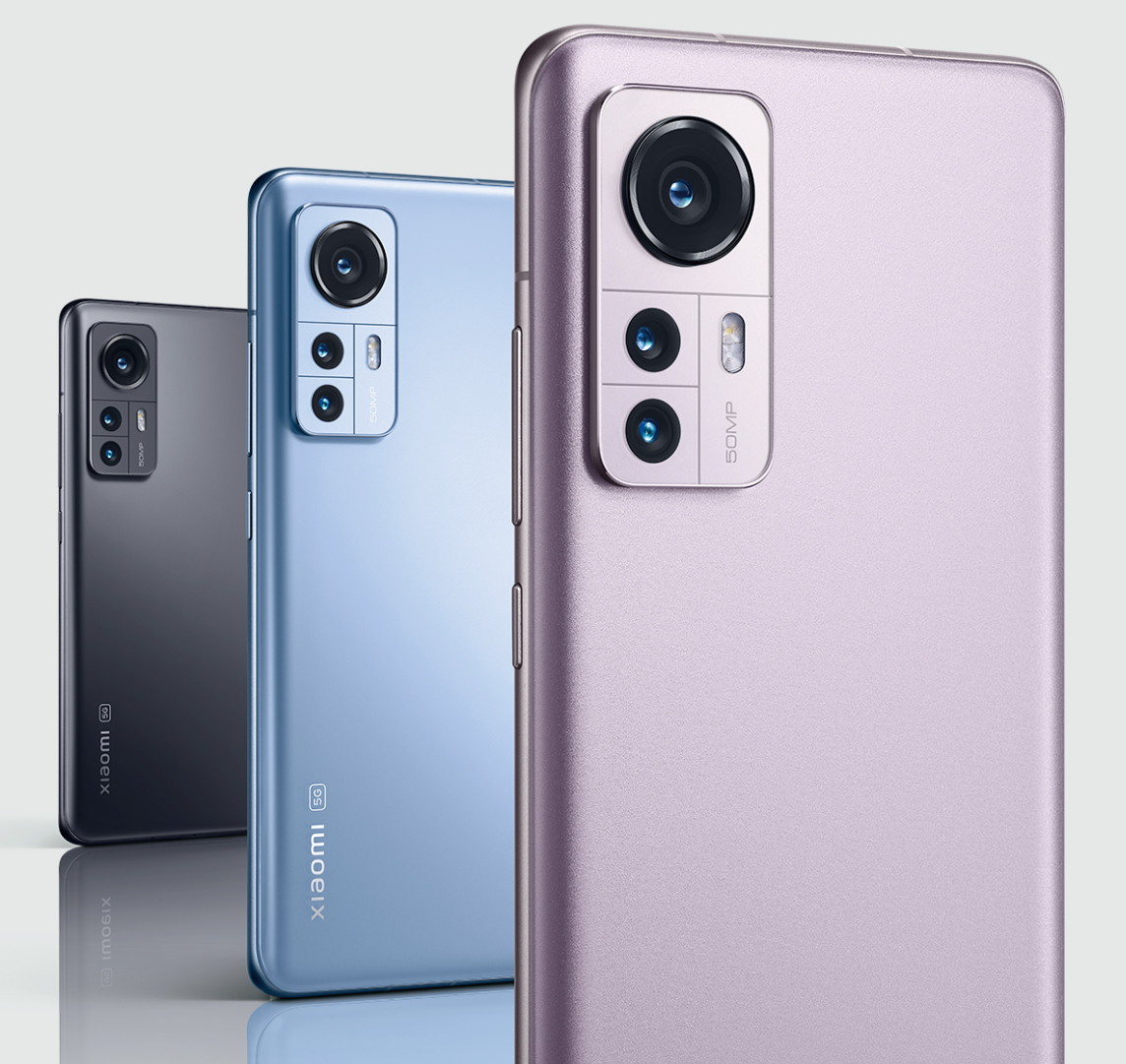Xiaomi's Spring 2022 Launches Continue MWC Trends
Xiaomi 12 Pro
Xiaomi 12 Series Continues Move Upmarket, Midtier Retains Xiaomi’s Traditional Value Proposition
Xiaomi is famous for claiming it deliberately minimizes its profit margins so that it can undercut rivals on pricing and offer better value to the customer. The idea is to make money on volume, other connected ecosystem devices, ads, and services. This model works best in China – where Xiaomi can take a cut of app store sales and its ads target a huge installed base – but Xiaomi has steadily pushed into the rest of Asia and Europe. (The U.S. is perennially a market Xiaomi is targeting “next year.”)
Despite the low margin business model, Xioami does not only make low and mid-tier phones. In fact, Xiaomi has long been one of the first to market with Qualcomm’s latest flagship silicon applied to phones with top-tier imaging, memory, and design specs. Xiaomi recently launched three new flagship phones as part of its Xiaomi 12 series, and a mid-tier Redmi Note. As smartphones mature and people use their phones more/longer, prices for the most premium phones are rising. There's also a race to replace Huawei at the top end of the market inside China. This was a key theme of Chinese phone launches at Mobile World Congress. However, there is also pressure to serve budget-oriented consumers with more powerful devices at lower price points.
Xiaomi 12
Xiaomi 12 Series
The $750 Xiaomi 12 features a Qualcomm Snapdragon 8 Gen 1, narrow form factor, 67 watt charging system smart enough not to kill the 4500 mAh battery, cameras with better focus and low light, and an impressively bright 120Hz 6.2" AMOLED display. You can save $100 if you get the Xiaomi 12X, which drops down to a Qualcomm Snapdragon 870, but is otherwise mostly identical. Both have Dolby Vision on that 1100 nit (peak) display and Dolby Atmos on the dual speakers. Still, the price differential makes the "latest processor" tax clear.
The true flagship is the Xiaomi 12 Pro, and it comes at a cost: $999. The Xiaomi 12 Pro keeps the Snapdragon 8 Gen 1, upgrades all three cameras to 50MP cameras, embiggens the display to an even brighter 6.73" LTPO 2 panel, and offers truly crazy fast 120W charging. None of the 12 series have IP ratings (they should all be fine in the rain, but don't drop them in the pool). The Xiaomi 12 Pro has a 50MP telephoto camera, but at just 2x zoom it isn't competitive with the periscope camera on Samsung's Galaxy S22 Ultra. Xiaomi is still undercutting Samsung on price but not by the margin Xiaomi has been known for in the past, and other flagship phones from Realme, OnePlus, and even Google are cheaper still. Thankfully, Xiaomi is following the trend to longer OS (3) and security (4 years) updates - but again, not as long as Samsung (or Apple).
That isn’t to say that the Xiaomi 12/X/Pro aren’t worthy products. All three versions of the Xiaomi 12 look like good phones (Techsponential hasn’t gotten review units in; if we do, we will update this report accordingly). However, only the $650 Xiaomi 12X is a particularly strong value compared to flagship phones from rivals – and only by ditching the flagship processor.
Redmi Note
Xiaomi’s new Redmi Note 11 Pro Plus 5G has the worst phone name since the Samsung Galaxy S II Epic 4G Touch. Naming conventions aside, Xiaomi is more competitive in the mid-tier, where the latest Redmi Note has strong specs at a compelling $369 price point. Xiaomi balances performance and price with MediaTek’s Dimensity 920 5G silicon, with a 6.7” 120Hz OLED display and a 4,500 mAh battery.
Xiaomi is positioning the Redmi Note against other feature-rich mid-tier phones like Samsung’s $449 Galaxy A53. The Redmi Note costs $80 less, has faster charger and comes with a power brick in the box, still has a 3.5mm headphone jack, and has more premium design with a glass rear panel. Plenty of consumers will opt for the Galaxy A53 anyway. Samsung has a rich ecosystem that includes the Galaxy Watch4, the best Android smartwatch on the market. Samsung’s software experience is now surprisingly refined, and it offers longer OS and security support than Xiaomi by at least a year – possibly two, as the Galaxy A53 launched with Android 12, and Redmi Note is launching with Android 11. Techsponential has a Galaxy A53 in for review, and the textured back panel doesn’t feel like cheap plastic. It is also less likely to shatter than glass. However, even if Samsung is not able to match Xiaomi’s charging speeds, it really should offer a voucher for a free charger for those who need one.
Ecosystem
Xiaomi has a tremendously broad hardware ecosystem that stretches from air purifiers to electric scooters to robot vacuums. On the mobile accessories side, Xiaomi is launching updated premium ANC earbuds ($199 Buds 3T Pro) and two smartwatches: the $199 S1 Active, which is really a fitness band shaped like a watch, and the $269 Watch S1, which is a fitness band shaped like a really nice watch. Xiaomi is one of the world’s largest vendors of fitness bands, but it is not clear that these new models are going to move the needle much.
To discuss the full implications of this report on your business, product, or investment strategies, contact Techsponential at avi@techsponential.com or +1 (201) 677-8284.


